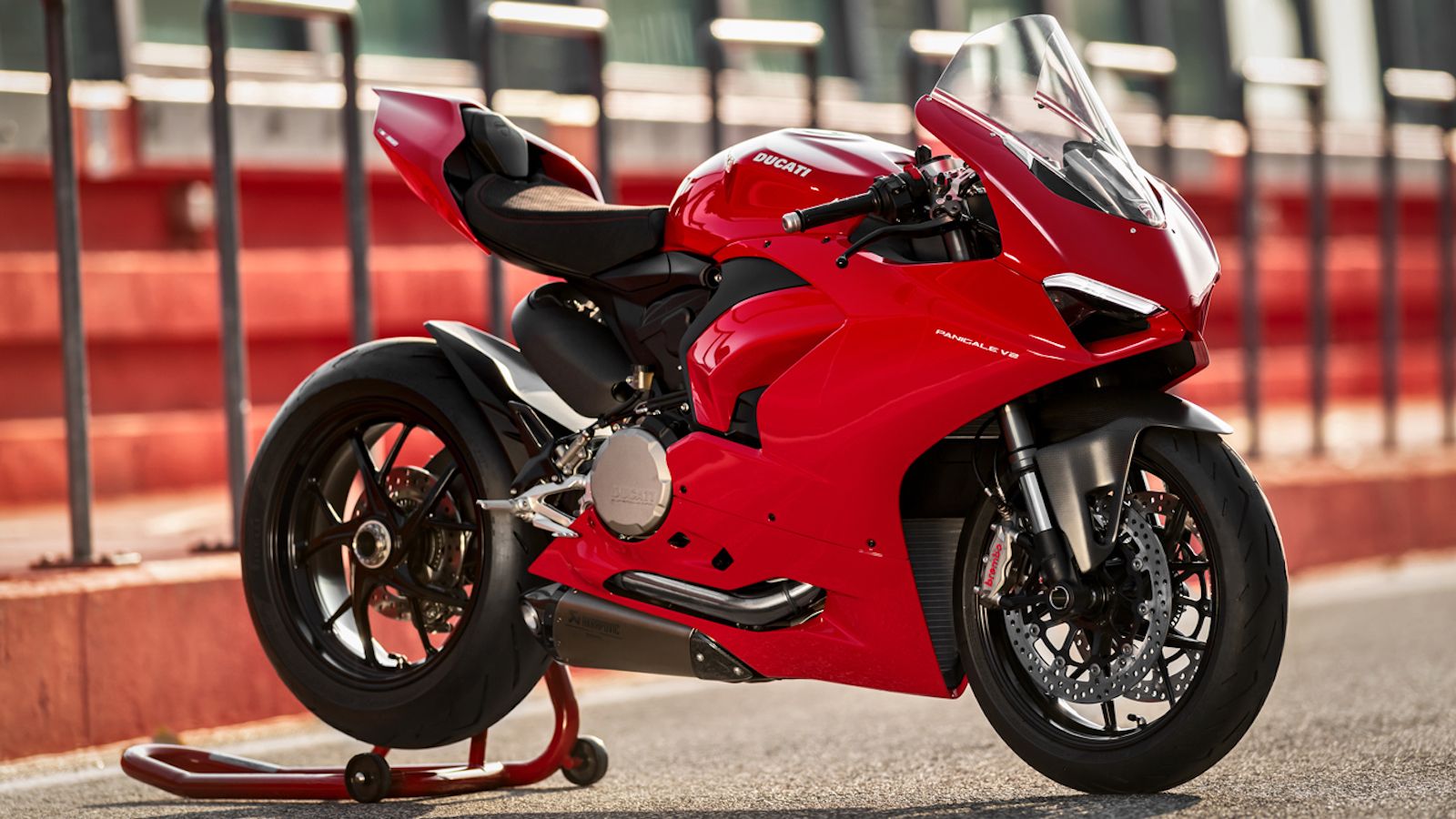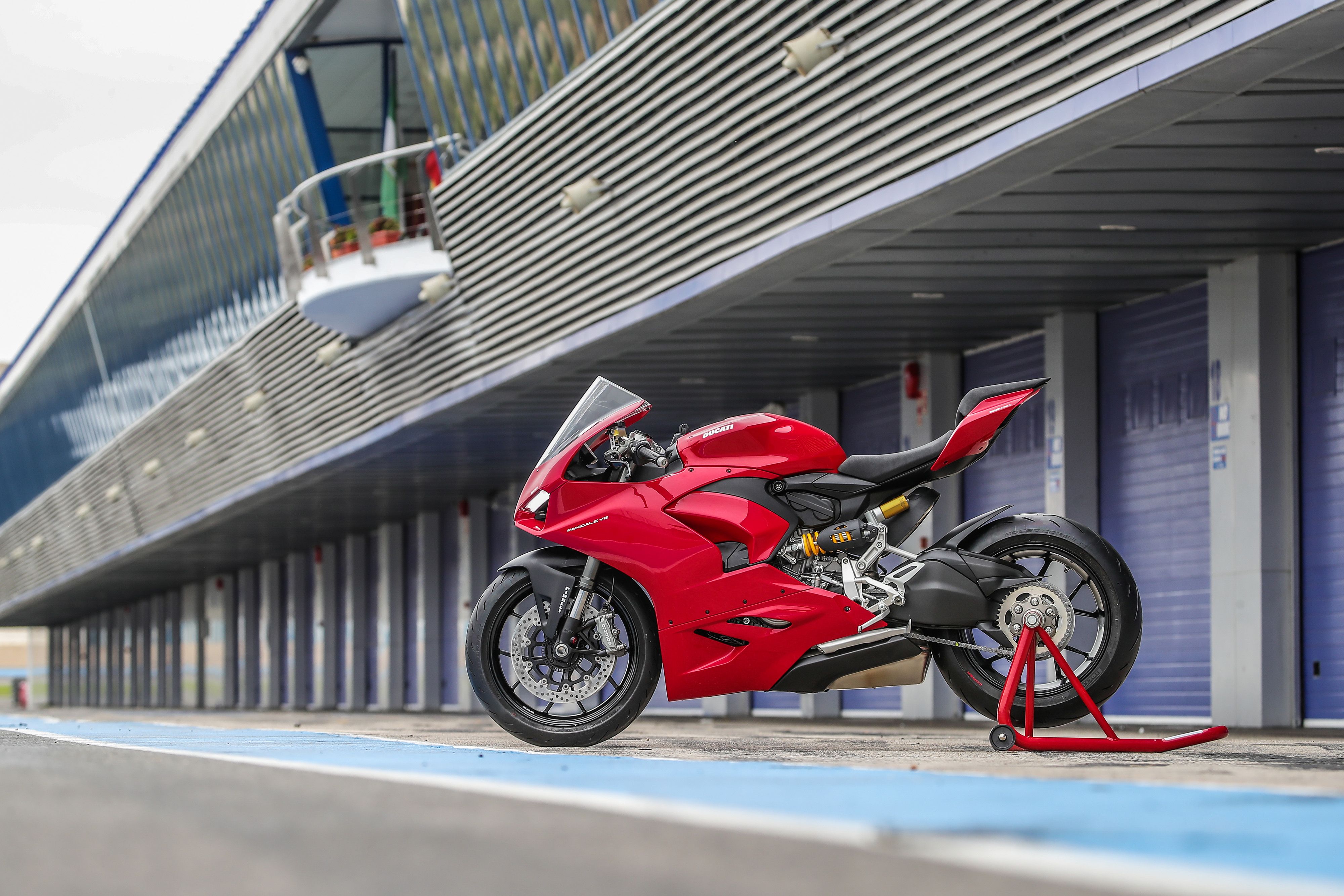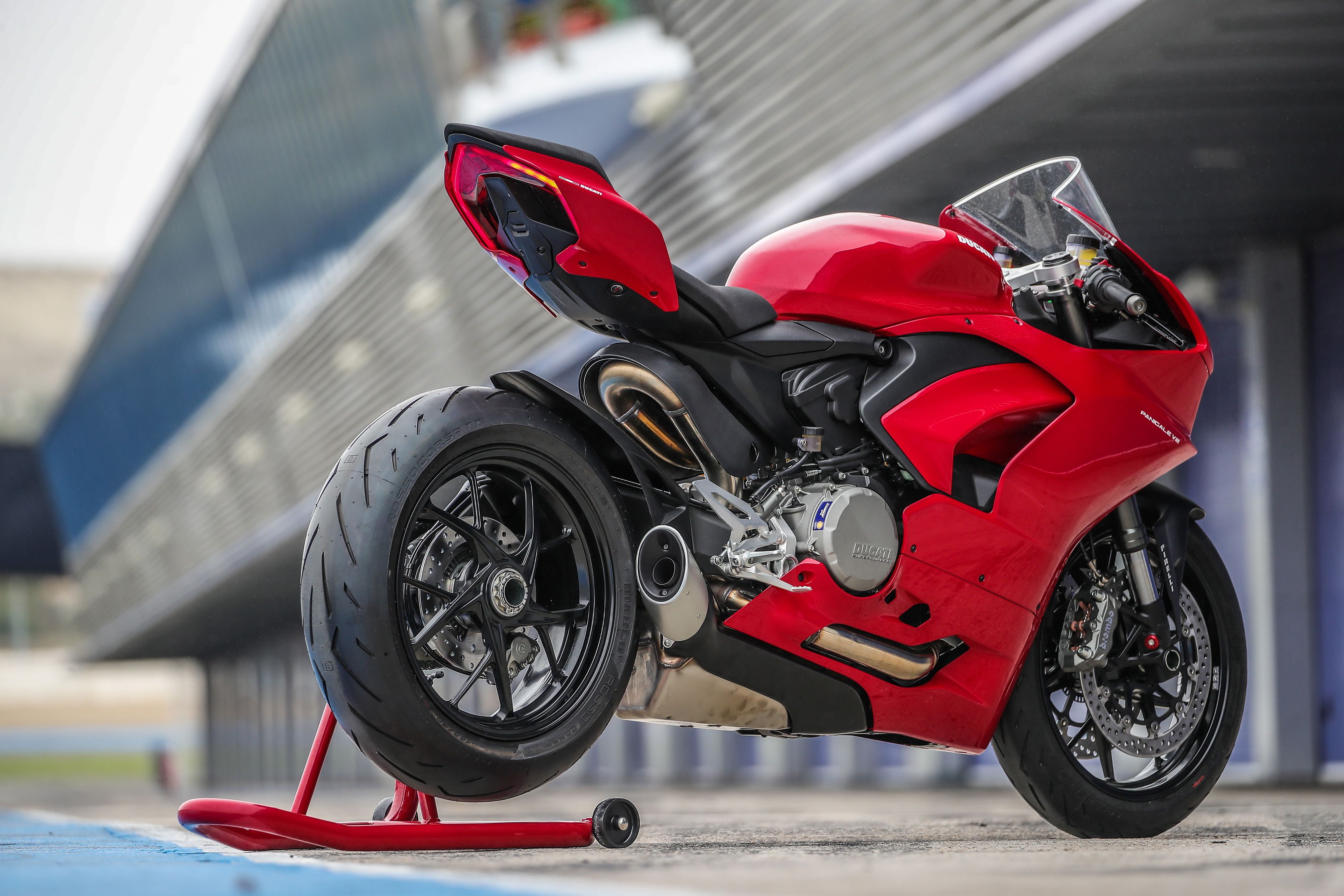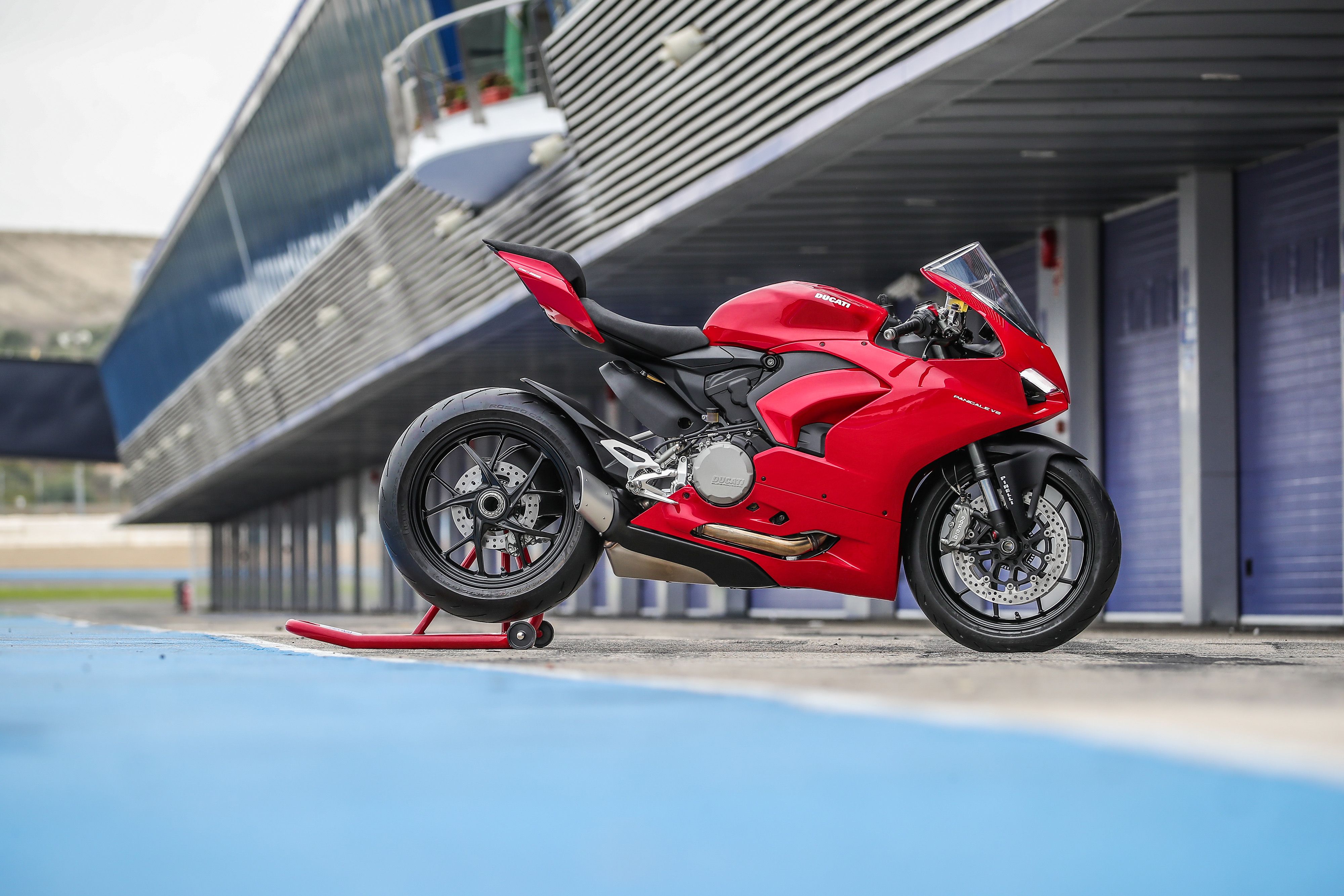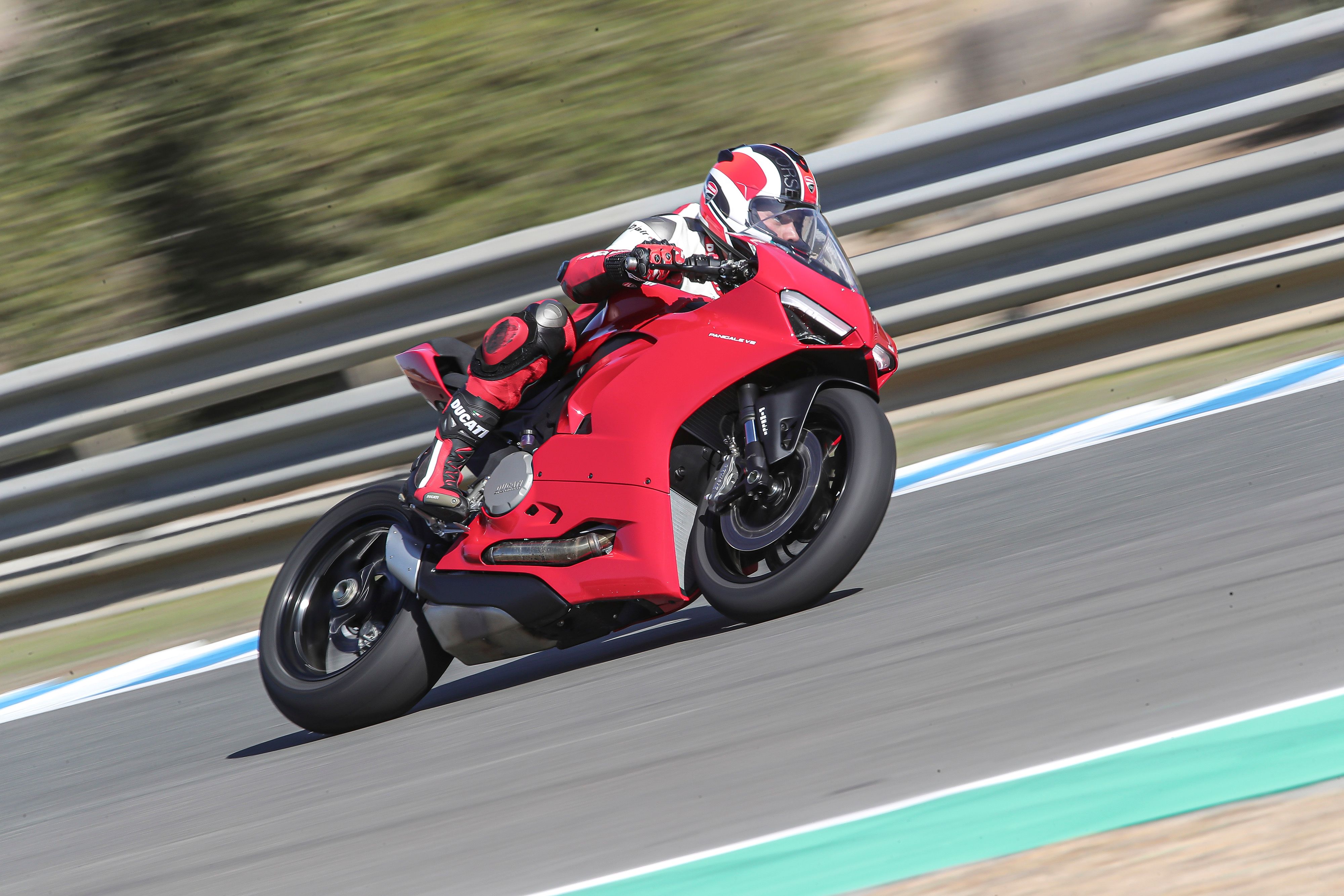When Ducati announced its new V4 engine that would power its top-of-the-range sports and other road bikes, there was general dismay that the V-Twin engine that had characterized every Ducati since the early 1970s would disappear and a lot of heritage would be lost.
However, the opposite is true, and the V-Twin engine continues to be the mainstay of the line-up. Another bonus is that the V-Twin-engined models now appear to be performance bargains and what Ducati knows about building exceptional V-Twin-engined sport bikes will continue to inform the development of future models, much to the relief of Ducatisti the world over.
10 The Ducati Panigale V2 Engine Packs A Punch
The engine in the Panigale V2 is the Superquadro (four valves per cylinder) 90° V-Twin, displacing 955cc and producing 155 horsepower at 10,750 rpm and 77 foot pounds of torque at 9,000 rpm, with 60% available from 5,500rpm. If these figures seem a little underwhelming compared to the 200+ horsepower of liter superbikes from the likes of BMW, Honda, etc., then that only serves to exaggerate the real-world practicality of the Panigale V2 as opposed to the nerve-shredding inaccessibility of the performance of its pure-sports competitors.
Also, Ducati could hardly be expected to challenge their own Panigale V4! The torque curve is beautifully linear and gives plenty of accelerative excitement, both from standstill and through the gears on the move, while it will rev eagerly to its red line. Ducati hasn’t forgotten how to build a good V-Twin engine.
9 The Panigale V2 Has Three Ride Modes
If you find yourself unable to resist twisting the throttle to its maximum every time you venture out onto the road, Ducati offers three power modes on the Panigale V2. ‘Race’ offers the most aggressive throttle response, but for all that, it is never harsh or sharp in response. In this mode, the rider aids are less restrictive. ‘Sport’ dials down the throttle response to a degree, although it could never be accused of feeling lazy and is great for fast road riding without the risk of grabbing too much throttle at the wrong moment. ‘Street’ is the most relaxed in terms of throttle response, with the highest level of rider aid intervention.
8 Rider Aids Are Necessary
As you would expect, there is a six-axis internal measurement unit (IMU) lurking in the electronics to guide the rider aids. This provides eight levels of cornering traction control, three levels of cornering ABS, four levels of wheelie control and three levels of engine braking control. The electronics are dubbed Evo 2 by Ducati, being the second generation, and the Traction Control, in particular, has been improved to detect traction loss earlier, meaning the intervention is less intrusive as the rear wheel hasn’t had as much time to spin up. It’s nothing less than you would expect, given Ducati’s experience in both World Superbikes and MotoGP.
7 Advanced ABS
Blame that dastardly Euro5, but the ABS cannot be disabled completely, although it can be turned off at the rear wheel, while level 1 on the ABS removes the cornering function. The ABS also incorporates rear wheel lift detection and this is disabled in level 2. Showing just how far these systems have come, level 2 also enables a ‘slide-by-brake’ function, allowing the rider to ‘back’ the bike into a corner. Level 3 ABS is full nanny mode for the street, which given the state of the roads and the standard of driving visible, is not a bad thing.
6 The Panigale V2 Has A Top Notch Suspension
As you would expect, there have been no corners cut in the suspension department. 43mm fully adjustable Showa forks at the front and a fully-adjustable Sachs shock at the rear. If it lacks any form of electronic damping control, then that is in line with the price point of the bike, and let’s be honest, a well set-up suspension shouldn’t need any form of electronic trickery.
Whether under heavy braking or hard acceleration, the suspension never ties itself in knots and the spring and damper rates have been carefully configured to offer supreme control in any riding conditions. The rear shock is 2mm longer than on the 959, which moves the weight bias fractionally to the front, which not only improves the secure feeling of the front but also improves agility.
5 Wheels And Brakes
The wheels are new and look super-lightweight, having spindly five Y-shaped spoke wheels, wearing Pirelli Diablo Rosso Corsa ll tires, of 120/70 and 180/60 sizing front and rear. Brembo handles the braking duties, with a pair of M4.32 calipers clamping 320 mm floating discs up front and a single-piston caliper clamping a 245 mm disc at the rear. While lacking the ultimate feel of the Stylema monobloc calipers from the same company, an initial soft bite gives no indication of the stopping power available, which is prodigious and free of fade.
4 Undeniably Gorgeous
Oh, come on: it’s a Ducati! When have they ever designed an ugly bike? OK, yes, the 999 was a bit facially challenged, as was the original Multistrada, but somehow, that Italian racing red allows you to gloss over any questionable elements and look at the design as a whole. The Panigale V2 has been given styling tweaks to bring it more into line with the Panigale V4 and there is absolutely nothing wrong with that.
Ducati has worked hard on the exhaust system to make it not only Euro5 compliant but also beautifully small and tucked out of the way, not something you could say about the previous 959. A single-sided swing arm might confer absolutely no advantage to a road bike, but boy, do they look the business!
3 Limited Accessibility
It’s a sports bike, so you don’t climb aboard expecting to be cosseted and comfortable, right? Having said that, the Panigale V2 feels a bit more spacious and comfortable than many of its rivals in any sport bike class. The seat is, thankfully, more than a plank with a bit of fabric covering and is slightly larger than the old 959, enabling taller riders to get into a racing crouch without their nose scraping the screen. Seat height is 33.1 inches, but it has been narrowed significantly at the front where it meets the tank, making it easier to get your feet to the ground.
2 The Panigale V2 Is far From Perfect
Normally, you have to be really nit-picky to find anything to criticize on a modern motorcycle, although with the Panigale V2 it is a little easier as Ducati have thoughtfully provided a rear cylinder exhaust header curving round under the seat like a heating element. OK, we’re not talking the full under-seat exhaust mufflers that were such a fashion item a few years back. But unless you’re howling round the track, with enough air flow to remove the hot air surrounding the header, heat build up can be pretty excruciating when riding stop-start around town, toasting your inner thighs to the required level.
1 Rivals And Price
The mid-size sports bike is no longer as popular as it once was, although to call the Panigale V2 with its 955cc engine ‘mid-size’ is a little misleading. Obvious rivals in the sport bike category include the Suzuki GSX-R750, costing $12,849, which is a healthy chunk of change cheaper than the Ducati, which will set you back $18,595.
Having said that, the Ducati is much better equipped in terms of electronics than the largely analogue Suzuki. It’s the same for the Kawasaki ZX-6R, even cheaper than the Suzuki at $11,999, although the engine is ‘only’ 636cc, producing 131 horsepower. If the Ducati can’t hold a candle to the current breed of liter sport bikes, in terms of power, but it offers a more accessible and still extremely desirable sport bike for the rider who has nothing to prove to anyone.

